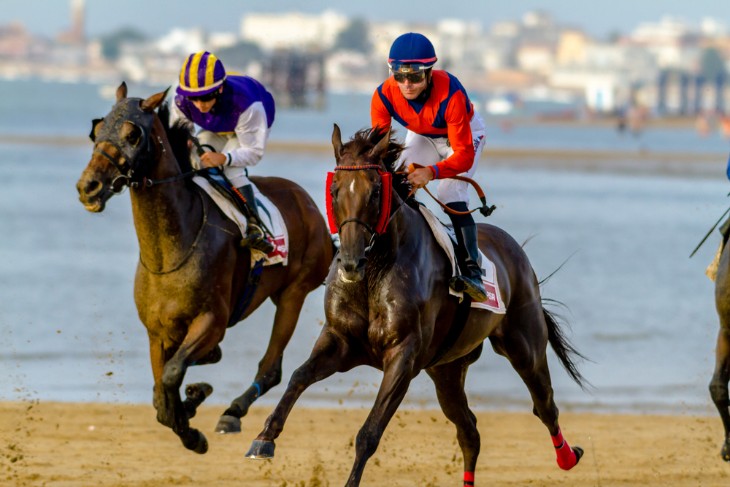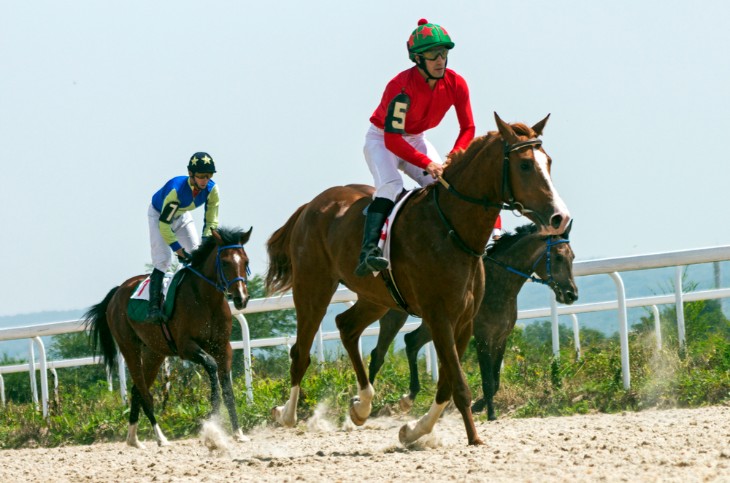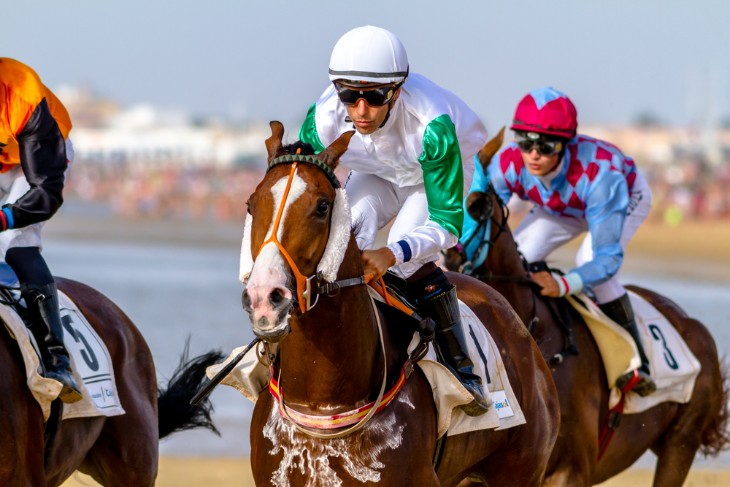- Understanding Tricast Betting: Basics and Mechanics
- The Grand National: An Overview of Britain's Premier Horse Racing Event
- Key Factors Influencing Tricast Betting Outcomes in Horse Racing
- Analysing Past Grand National Races: Trends and Patterns
- Horse Selection Strategy: Picking the Top Three Contenders
- Financial Management: Balancing Risks and Rewards in Tricast Betting
- Utilising Technology: Software and Tools for Better Betting Decisions
- Learning from the Experts: Case Studies in Successful Tricast Betting
- Conclusion
Understanding Tricast Betting: Basics and Mechanics
Tricast betting, a popular form of wagering in horse racing, involves predicting the first three finishers of a race in the correct order. This form of betting is known for its complexity and the higher degree of difficulty compared to simpler bets like win or each-way. The mechanics of tricast betting are straightforward: a bettor selects three horses that they believe will finish first, second, and third, in that specific order. The appeal of tricast betting lies in its potential for high returns. The odds of correctly predicting the top three finishers are relatively low, which results in higher payouts when successful.
The process of placing a tricast bet varies slightly depending on the bookmaker. Generally, bettors fill out a betting slip, specifying the race, the horses selected, and the type of bet. In online platforms, this process is simplified through digital interfaces. The cost of a tricast bet can be higher than other types of bets due to the multiple combinations involved. Bettors can also opt for a combination tricast bet, where they can win if their chosen horses finish in the top three in any order, but this requires a larger stake as it covers multiple potential outcomes.
The Grand National: An Overview of Britain's Premier Horse Racing Event
The Grand National, held annually at Aintree Racecourse in Liverpool, is a cornerstone of British horse racing. This event, steeped in history and tradition, dates back to the 19th century and has grown to become one of the most challenging and prestigious horse races in the world. The race, covering a distance of over four miles, features a series of demanding fences and steeplechase obstacles. It is renowned for its unpredictability and the sheer test of endurance and skill it poses for both horse and jockey.
The Grand National garners widespread attention, not only from horse racing enthusiasts but also from the general public, making it a prime event for Tricast Betting. The race's unpredictable nature, large field of runners, and the varied abilities of the horses make predicting the top three finishers an exciting and challenging prospect for bettors. This complexity adds an extra layer of intrigue to tricast betting during the Grand National, attracting both seasoned punters and casual bettors to participate in this high-stakes wagering.
Key Factors Influencing Tricast Betting Outcomes in Horse Racing
When engaging in Tricast Betting in horse racing, several key factors must be considered to enhance the chances of a successful bet. These factors influence the race's outcome and, subsequently, the tricast betting results:
- Horse's Form: The current form of the horse is crucial. This includes recent race performances, consistency, and any known injuries or health issues.
- Track Conditions: The condition of the racecourse, whether it's dry, wet, or muddy, can significantly impact the performance of different horses.
- Jockey Experience: The skill and experience of the jockey play a vital role. A seasoned jockey can make strategic decisions during the race that can affect the outcome.
- Starting Position: The horse's starting position or draw can influence its performance, especially in races with a large number of runners.
- Weather Conditions: Weather on the day of the race can affect both the track condition and the horses' performance.
- Distance and Course: Some horses perform better at certain distances or types of courses, making the specific characteristics of the racecourse a factor to consider.
These elements are integral to forming a well-informed tricast bet. By analysing these factors, bettors can make more educated predictions about which horses are likely to secure the top three positions in a race.

Analysing Past Grand National Races: Trends and Patterns
To enhance the strategy for Tricast Betting in the Grand National, it's insightful to examine past races to identify any trends or patterns. This historical analysis can provide valuable insights into how certain types of horses perform under the unique conditions of the Grand National. Key aspects to consider include:
- Winning Horse Profiles: Looking at the characteristics of past winners, such as age, breeding, and previous race performance.
- Impact of Track Conditions: Observing how different track conditions have influenced past race outcomes.
- Fence Difficulty: Identifying which fences have historically caused more difficulties and how this has affected the race results.
- Jockey and Trainer Records: Examining the track record of successful jockeys and trainers in the Grand National.
The influence of jockeys and trainers is often a critical factor in the success of horses in races, significantly impacting the outcomes of Tricast Betting. Jockeys play a pivotal role in the race, making real-time decisions that can make the difference between winning and losing. Their understanding of the horse, the racecourse, and the dynamics of the race are crucial. A jockey's ability to navigate the course, maintain a strategic position throughout the race, and effectively manage the horse's stamina and speed is essential for success in the Grand National.
Trainers, on the other hand, are responsible for preparing the horse for the race. This preparation includes physical training, ensuring peak fitness, and psychological conditioning. Trainers also decide on the race strategies and select the races that best suit the horse's abilities. Their expertise and knowledge in understanding each horse's strengths, weaknesses, and preferences are crucial. In tricast betting, considering the track record and reputation of both the jockey and the trainer can provide valuable insights into a horse's potential performance in the Grand National.
Horse Selection Strategy: Picking the Top Three Contenders
Choosing the right horses for Tricast Betting involves a strategic approach, considering various factors that influence a horse's potential performance. The first step is to analyse the form of each horse, which includes their performance in recent races, their consistency, and how they have fared against similar competition. This form guide provides a snapshot of a horse's current condition and potential to perform well in the upcoming race.
The pedigree of the horses is another critical factor. Certain breeds have a history of excelling in specific types of races, and understanding these nuances can be beneficial. It's also important to consider the horse's experience and past performance in races of similar distance and track conditions to the Grand National. These insights help in narrowing down the choices to those horses that have the best chance of securing the top three positions.
Financial Management: Balancing Risks and Rewards in Tricast Betting
Effective financial management is essential in Tricast Betting, as it involves higher risk compared to simpler betting forms. The first principle is to only bet what one can afford to lose. It's crucial to set a budget and stick to it, as tricast betting, given its complexity, can lead to significant losses if not managed properly.
Diversifying bets is another strategy. Instead of placing all funds on a single tricast bet, spreading the bets across different races or different types of bets can minimise risk. Additionally, considering the odds is important. While higher odds mean bigger payouts, they also indicate a lower probability of winning. Balancing the desire for high returns with the likelihood of winning is key to effective financial management in tricast betting. Being mindful of these financial strategies can make the betting experience both enjoyable and responsible.

Utilising Technology: Software and Tools for Better Betting Decisions
The use of technology has revolutionised Tricast Betting, providing bettors with tools and software designed to enhance decision-making. Betting software often includes features like race analysis, form guides, and statistical data on horses, jockeys, and trainers. These tools can process vast amounts of data to identify patterns and probabilities that might not be apparent through traditional analysis. Some software offers simulation features, allowing bettors to experiment with different tricast bet combinations and see potential outcomes without risking real money.
Moreover, online platforms have made access to information and betting markets more convenient. Bettors can now place bets, track race updates, and access expert insights from their devices, making informed betting more accessible than ever. This technological advancement has created a more level playing field, where amateur bettors have access to resources that were once exclusive to professional punters.
Learning from the Experts: Case Studies in Successful Tricast Betting
Gaining insights from successful case studies in Tricast Betting can be incredibly beneficial for both novice and experienced bettors. These real-life examples often provide practical strategies and lessons learned. Key elements from these case studies often include:
- Selection Strategy: Examining the horse selection strategies used by successful bettors, including how they analyse horse form, track conditions, and jockey performance.
- Risk Management: Understanding how they manage their betting funds and balance the risk-reward ratio.
- Adaptability: Observing how they adapt their strategies based on race conditions and unexpected developments.
- Use of Technology: Learning how technology and betting tools are utilised to gain an edge in their betting decisions.
Studying these case studies offers a practical approach to understanding the complexities of tricast betting. It can provide valuable insights into making more informed decisions and developing strategies that increase the chances of successful outcomes.
Conclusion
In conclusion, mastering Tricast Betting in the Grand National requires a multifaceted approach. It involves understanding the basics and mechanics of tricast betting, being aware of the historical context of the event, and considering the various factors that influence race outcomes. The role of technology has become increasingly significant, offering tools and resources to assist in making informed betting decisions.








